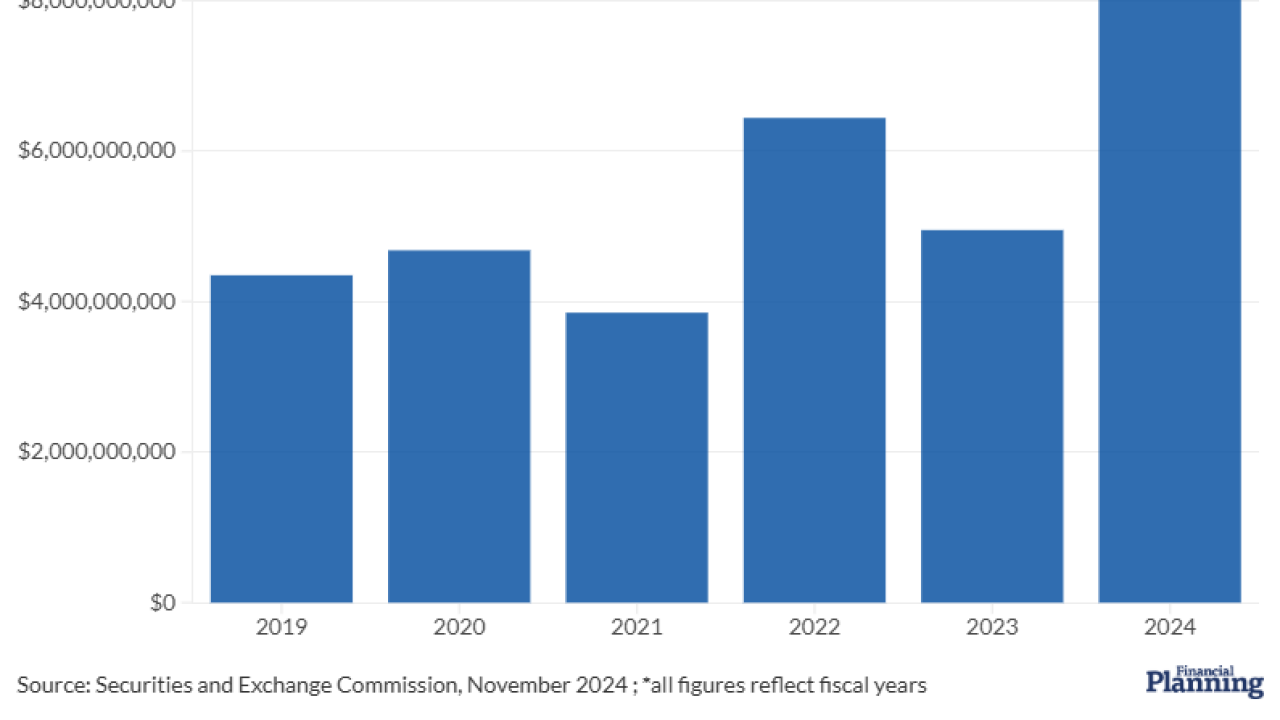SEC examiners will be eyeing a new relationship summary form to determine how dual registrants delineate services provided through the advisory and brokerage wings of their shops and how firms determine in which silo a client's account is placed.
Now that Reg BI is the law of the land, firms are required to explain their business model and fee structure in Form CRS. How such firms are "distinguishing between broker-dealer and advisor services" has become a "hot regulatory topic," according to Issa Hanna, a New York-based attorney with Eversheds Sutherland specializing in compliance issues in the financial-services sector.

Hanna and other compliance experts spoke during an online presentation this week hosted by the Practicing Law Institute.
When the SEC enacted the overhaul of advice standards that took effect last June, the commission made clear that it intended to advance separate regulatory regimes for advisors and broker-dealers. But included in the Regulation Best Interest rule package was a new relationship summary form, something that compliance experts say the SEC will be taking a close look at when it evaluates advisors who are dually registered as brokers.
"There's an interest in the regulatory community in ensuring that dual registrants are properly distinguishing how they describe their broker-dealer advisor services and not confusing retail customers about the service delivery models and which standards of conduct, etc., apply to the types of services they're providing," Hanna said.
While the commission acknowledged that there is some overlap in the services that brokers and advisors provide, former SEC Chairman Jay Clayton, the architect of Reg BI, argued at the time the rule was being debated that the two models are fundamentally different enough to warrant separate regulatory regimes. The final regulation codified that approach, dismaying investor advocates who sought a uniform fiduciary standard.
-
Consumer advocates are calling for Gary Gensler to toss out Reg BI as wealth managers aim to keep the prior administration’s rule in place.
February 3 -
The allegations involving 12b-1 fees, cash sweeps and commissions also include violations of best execution rules.
December 23 -
The regulation permits more exemptions from fiduciary duties, but may itself be replaced by the incoming Biden administration.
December 16
"The SEC has recognized as part of Reg BI that harmonizing those two standards of conduct is just impractical given the different service delivery models," Hanna said.
As a result, Reg BI is now jointly overseen by the SEC and FINRA but dual registrants still must satisfy the fiduciary standard to which the SEC holds advisors, as well as applicable state regulations.
"If you're active in this space, part of the challenge ... is you're dealing with a regulatory scheme that often speaks to one another, but at times overlaps or at times contradicts one another, so it's a real dynamic area," Clifford Kirsch, a long-time securities attorney with Eversheds Sutherland in New York, said in the presentation.
‘Silo risk’
The concerns over inappropriate account placement — be it conducting excessive trading in a commission-based brokerage account or so-called reserve churning, involving the placement of a low-maintenance client in a pricy fee-based account, are not new,
"In terms of whether you are acting in your investment advisor capacity or your broker-dealer capacity in making those recommendations — those account type recommendations — that [is] an area of significant regulatory scrutiny just because of which way you go — the fork in the road, so to speak, of the standard of conduct that's applicable to that account type recommendation," he said.
Avoiding investor confusion and having clear processes in place to determine which side of the firm to place an account can also help dual registrants "silo risk [and] silo regulatory attention," Hanna said.
As a result, firms that are set up with strong firewalls between the two sides of the practice might have an easier time during the examination process.
"If FINRA comes in to examine your broker-dealer entity," Hanna said, "you can feel a lot better about FINRA really only being able to touch the broker-dealer side of your business, not necessarily being able to get to the investment advisor side of your business."





